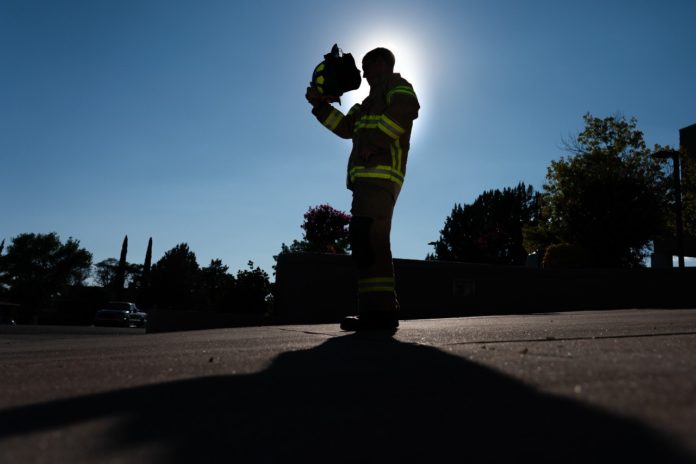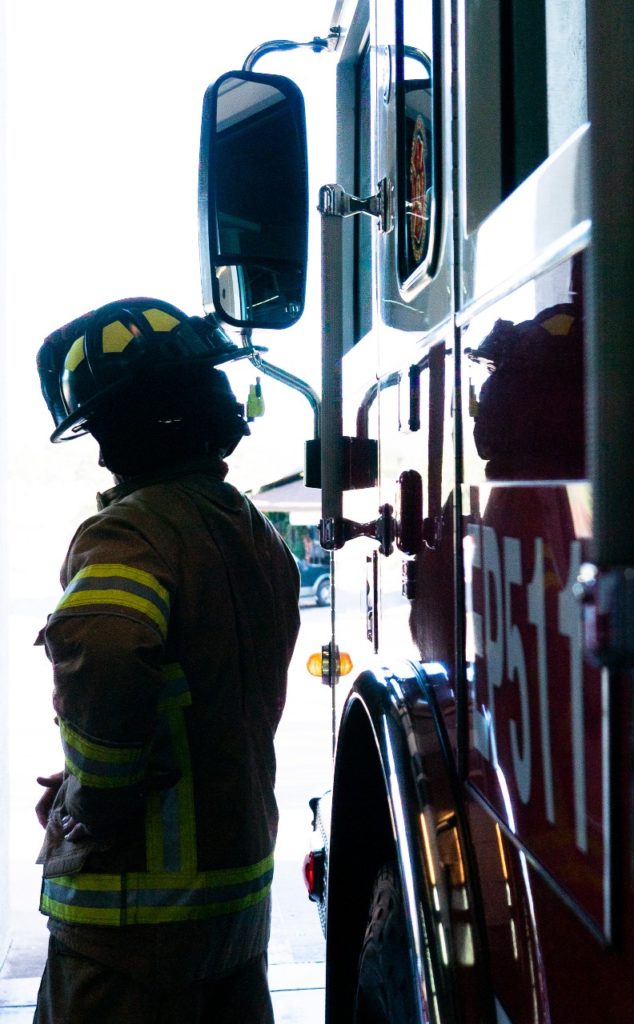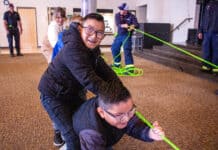
When first responders arrive at a call, they put the health and concerns of others before their own. But at the end of the day, when they hang up their turnouts or uniform, they’re human, just like everyone else.
However, because of what they see and do on a regular basis, they often deal with emotions that most people never have to. In the past those emotions were expected to be ignored — but not anymore.
Mental health among police officers and firefighters has taken center stage in many departments across the country and Sedona is no exception. Sedona Fire District Division Chief Ed Mezulis and Sedona Police Chief Charles Husted have seen firsthand the importance of no longer doing things the old-school way when dealing with mental health among their own. Implementing resources like Online Therapy and Counseling in Ontario could serve as a modern and accessible solution to support the mental well-being of emergency responders, ensuring they have the necessary tools to cope with the unique challenges of their profession.
The Sedona Fire District offers a tiered support system for its members, beginning with one at the peer level where they pick specific individuals to play that role.
“Generally, it’s the guys that people go to anyway,” he said. “That guy people are comfortable talking to. It’s usually someone in the lower ranks so that there’s a level of comfort.”
Another tier in SFD’s toolbox is a peer support team trained through the International Critical Incident Stress Foundation. While rarely needed, this team is used when incidents include SFD and other agencies such as SPD. In those cases they get everyone together in a room and retell the story. It’s not an analysis of the incident but rather an overview.
“Everyone has a different slide show of what may have happened on that incident,” Mezulis said.
Other members of SFD are trained to talk about post-traumatic stress and substance abuse. Data Mezulis found shows that as many as 50% of male firefighters nationwide engage in binge drinking and that the suicide rate is higher among firefighters than most professions.
Something the district has been focusing on lately is outreach to the families of SFD staff to teach them how to see the signs of stress, mental illness or post traumatic stress. Many are unaware of the resources available to families.
Other Resources
Spectrum Healthcare has created what it calls its Responders First program and it offers mental health professionals who are specially trained to deal with the issues facing first responders. This assistance can also be found through other agencies such as the 100 Club of Arizona.
It emphasizes mental health support, training, resources, referrals, services and financial assistance when agencies suffering budget constraints are not able to provide resources for the welfare of their officers/firefighters.
Mezulis praised the partnership the SPD and SFD has in everything from simply knowing one another’s names to being there for one another in times of need.
“I can think of a handful of calls we’ve had with SPD where the outcomes weren’t good for the folks we were helping but with our relationship we were all able to work through them,” he said. “It’s pretty darn cool.”
Husted agreed that the relationship between the two agencies — as well as those Verde Valley wide — is not always found in other communities between public safety and fire.

Husted said the police department does not have a formalized peer support program but that does not mean that help is not there when needed.
While a more robust support program is in the works, they do have a couple staff members who are trained in peer support as well as other resources at their disposal.
“But in policing, folks don’t often gravitate toward that because within that program, you don’t necessarily have providers who understand public safety,” he said in terms of those seeking out counseling. “I don’t think it’s used often.
“We also take part in the Responders First program that is really tailored more toward those who have proficiency in dealing with folks in public safety. That’s a helpful program because it’s anonymous. As the police chief I don’t need to know — I’m just thankful that it’s there and people reach out.”
In times of need, Husted said his department has relied upon agencies like SFD and the Yavapai County Sheriff’s Office for mental health services, citing the two officer-involved shootings in 2020. They offered initial assistance for those involved.
“For us it’s a work in progress,” he said of his department’s mental health assistance. “Wellness is a broad category that’s not just mental health, but mental health is a big aspect of it because police suicide, like with firefighters, is outrageously high. Just one is too many but if you look at the last several years, it continues to increase. Our goal is to create a broad, holistic wellness program that will provide opportunities for anyone who reaches out.”
Like the SFD, the police department wants to reach out more to families of the officers. He said a lot of officers attempt to leave the job at the office and don’t often share their experience with family and when they do, it’s often limited.
“Unfortunately, these stressors will accumulate and will often result in family challenges because the police officer has reached a level of stress and hasn’t been able to release some of the challenges they have been facing,” Husted said.
Breaking the Stigma
Husted and Mezulis, who have served in their professions for 33 and 24 years, respectively, say they remember back in the early parts of their career when mental health wasn’t discussed, let alone addressed. Both are happy to put those days behind them now that the topic is more out in the open,
“Traditionally in policing there’s been a stigma that going to a psychologist or counselor demonstrates some level of weakness,” Husted said. “Our profession has leaned hard in trying to break that stigma so that folks feel comfortable about getting the care they need.
“When I started it was kind of a ‘suck it up, kid, get over it — we’re going to meet up in the back after work and a few beers and you’ll be fine’ kind of mentality. You made inappropriate jokes about whatever the incident was and you realized that in that culture, you didn’t talk about how you felt. You joked it off.”
That was then.
“But now, because there’s been so much progress and understanding of the challenges of mental health and PTSD, it is more normalized,” Husted said, noting that he’s very open about the fact he’s sought counseling at times over the years. “But still, some of those old traditions of you have to be this representation of a tough person that’s Teflon and nothing bothers you remain. Those traditions still linger, somewhat, but it has gotten much better.”
COVID-19 Concerns
If first responders didn’t already have enough stress and concerns when going on a call, the ongoing COVID-19 pandemic has added yet another layer over the past 18 months.
Mezulis said early on in the pandemic the department made sure it had plenty of personal protective equipment and based their approach off the best science available to ensure the safety of their staff and the public. While they have had personnel test positive, he said it has not been rampant to the point a station has closed or resulted in an inability to respond to a call.
“I’m not going to pretend we haven’t had our share of struggles,” Mezulis said. “It’s not just the workplace stuff but it’s kids going back to school and family members getting sick.”
On top of that, Mezulis said the type of care they normally give has been altered. While emergency services have not changed, the more personal exchanges with the public has.
“It’s very stale and very sterile and that personal touch is no longer there,” he said. “That part sucks a lot and something that’s been difficult for a lot of our folks.”
Husted said the concern of the unknown in regard to COVID caused a lot of stress. And with that unknown came an uncertainty in terms of how to handle calls. So, he said they leaned on SFD for guidance. In the beginning, he said it was a matter of officers needing to do their job and how that would play out, while keeping themselves, their families and public safe.
“For anybody in our society, mental health care is critical,” Husted said. “Specific to law enforcement and fire, we have people in those professions who sees things nobody ever sees. They have to do things that don’t have to be done in normal society. So there are different layers of crisis in the public safety that the public at large aren’t aware of nor do they experience. So it’s abundantly critical for us to make mental health care a priority in our professions.”





















